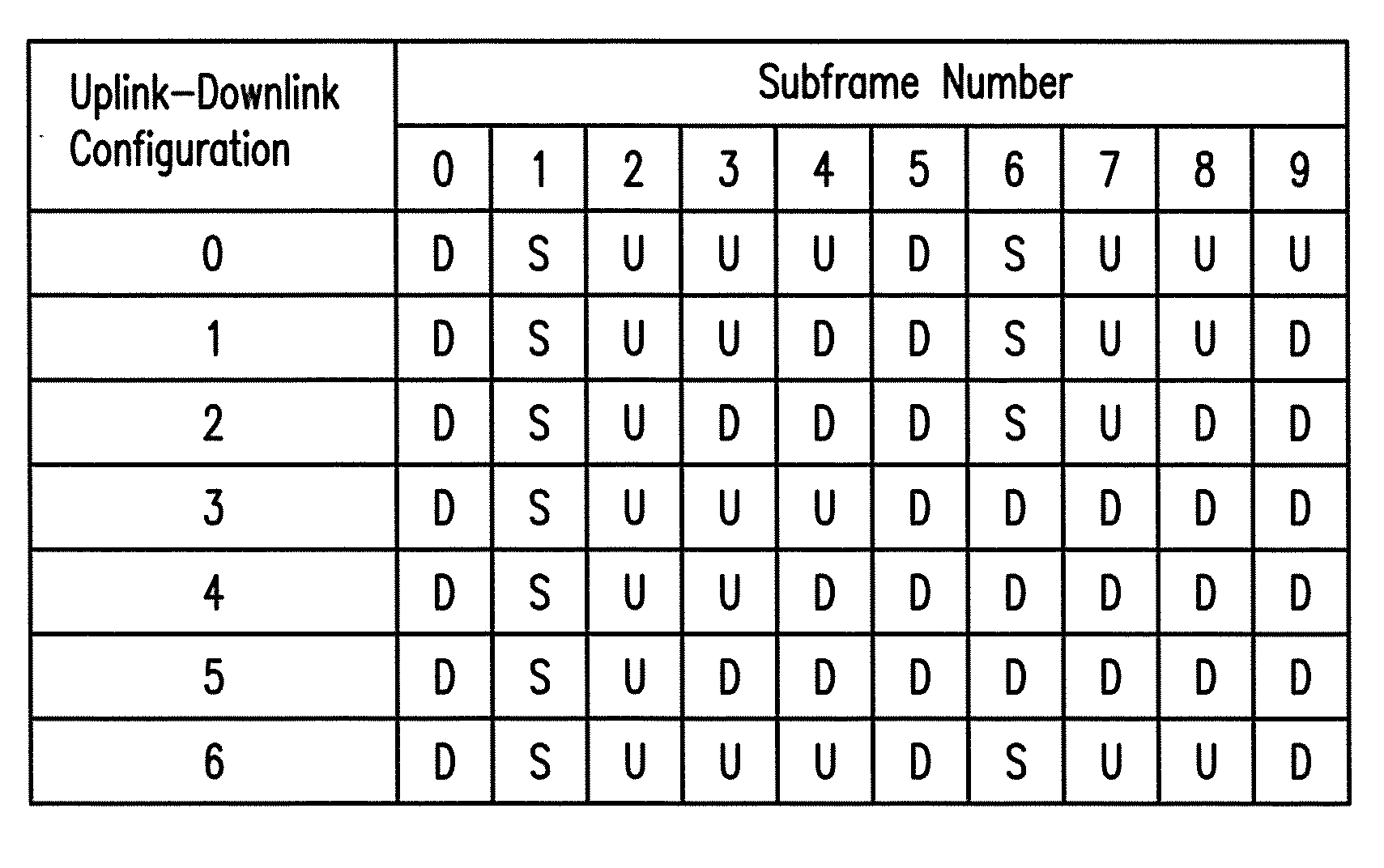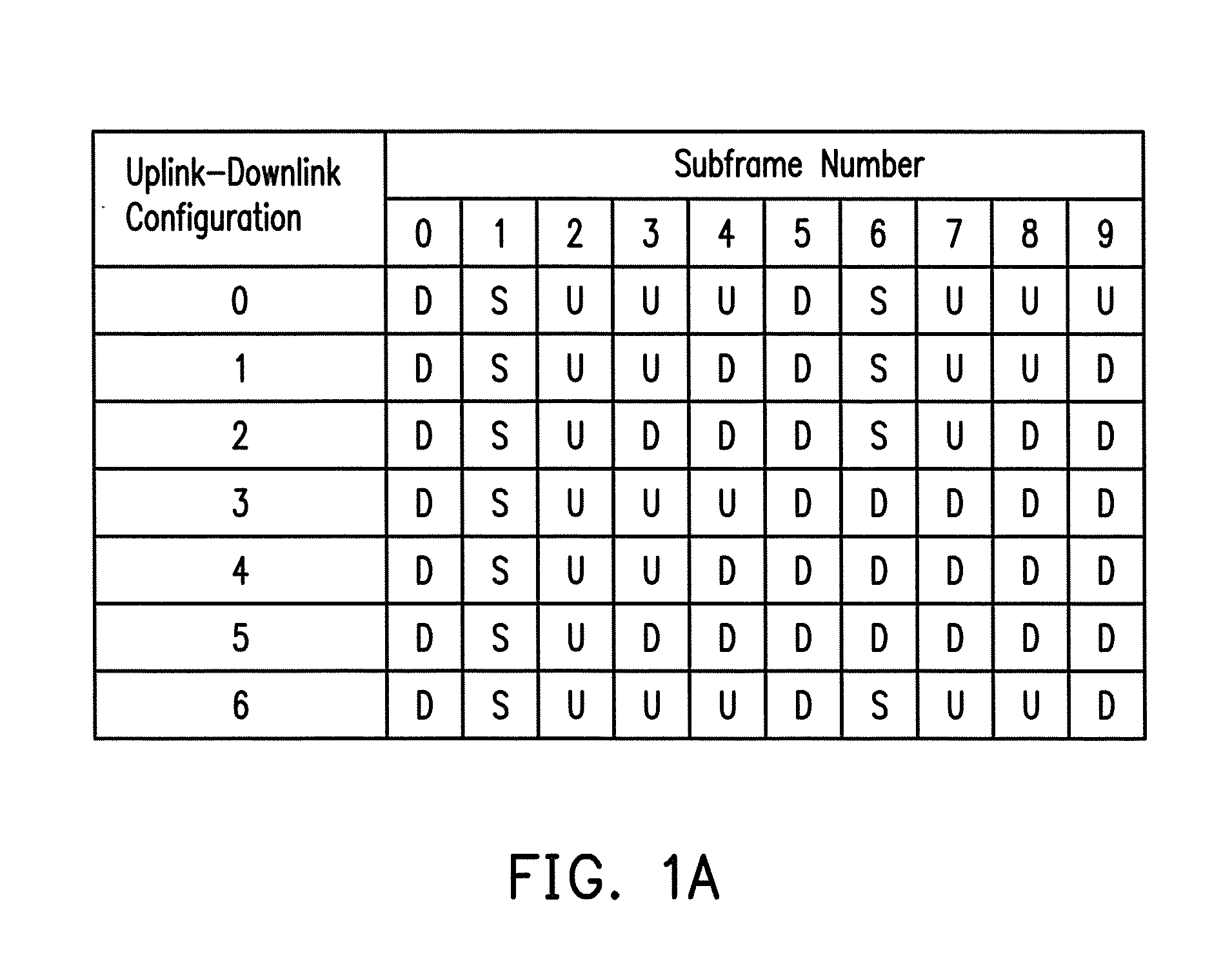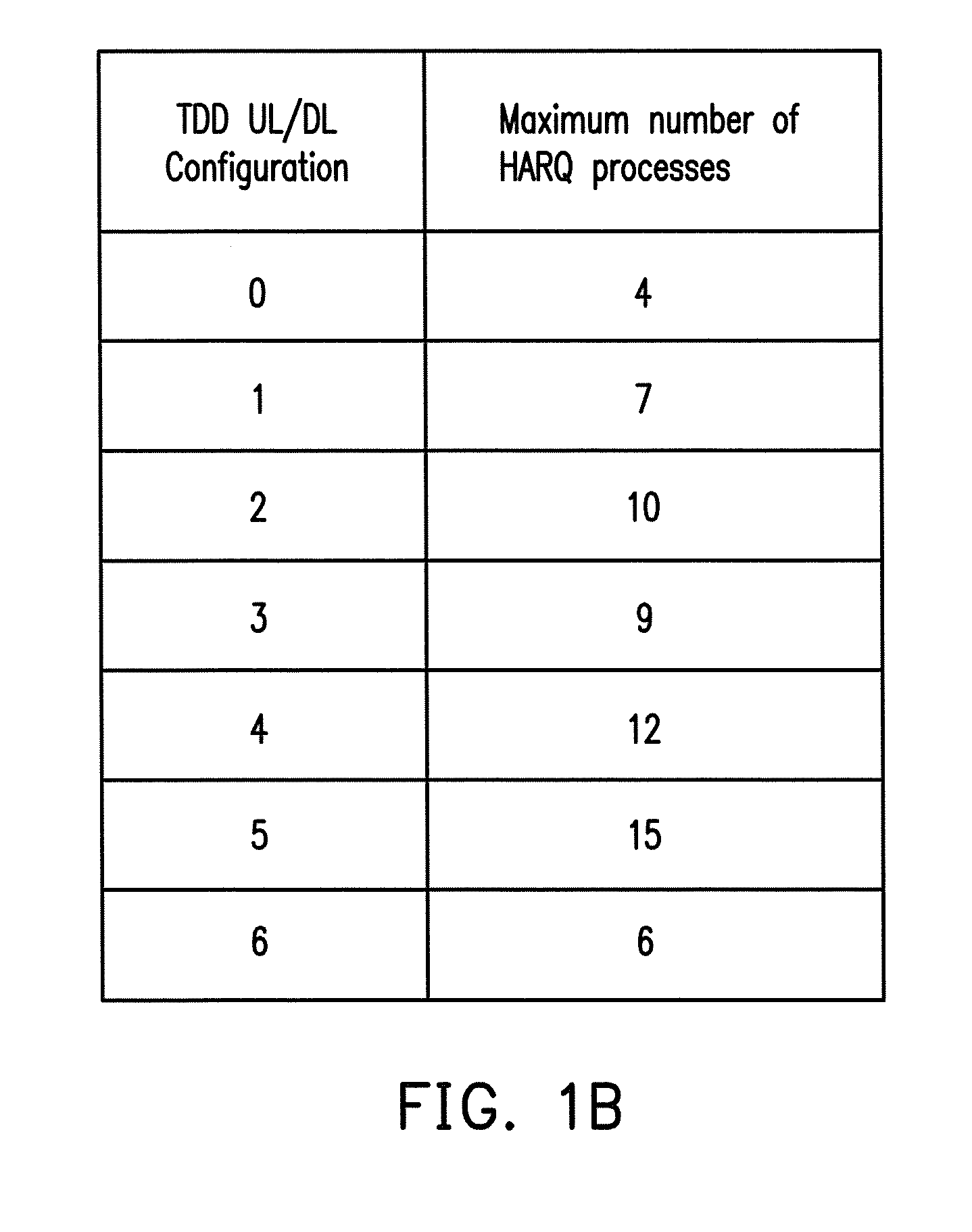User equipment and base station using dynamic TDD configuration mechanism
a configuration mechanism and user equipment technology, applied in the field of user equipment and a base station, can solve problems such as interference in the soft buffer management process of new ues, interference of harq operation, and interference among new ues
- Summary
- Abstract
- Description
- Claims
- Application Information
AI Technical Summary
Benefits of technology
Problems solved by technology
Method used
Image
Examples
Embodiment Construction
[0032]Reference will now be made in detail to the present exemplary embodiments of the disclosure, examples of which are illustrated in the accompanying drawings. Wherever possible, the same reference numbers are used in the drawings and the description to refer to the same or like parts.
[0033]Currently, TDD LTE allows for asymmetric DL-UL subframe allocations of a radio frame by providing seven different semi-statically configurations. In 3GPP release 12, a dynamic TDD configuration (eIMTA) is introduced so that a base station could dynamically configure or re-configure a TDD configuration based on traffic conditions. The present disclosure is concerned with a single carrier LTE TDD system with the functionality of dynamic TDD DL-UL reconfigurations. In such a system, using dynamic techniques to configure or re-configure a TDD configuration would cause problems between legacy UEs without a dynamic re-configuration capability and new UEs possessing a dynamic re-configuration capabil...
PUM
 Login to View More
Login to View More Abstract
Description
Claims
Application Information
 Login to View More
Login to View More - R&D
- Intellectual Property
- Life Sciences
- Materials
- Tech Scout
- Unparalleled Data Quality
- Higher Quality Content
- 60% Fewer Hallucinations
Browse by: Latest US Patents, China's latest patents, Technical Efficacy Thesaurus, Application Domain, Technology Topic, Popular Technical Reports.
© 2025 PatSnap. All rights reserved.Legal|Privacy policy|Modern Slavery Act Transparency Statement|Sitemap|About US| Contact US: help@patsnap.com



